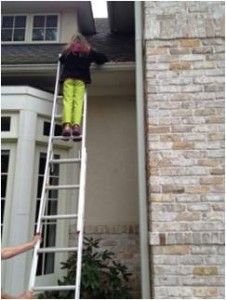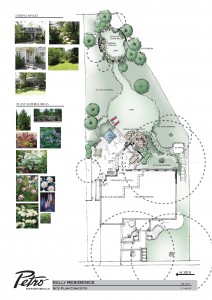When it comes to doing something myself; either for the adventure of it, as means to create a healthier product or just save some money, I’m interested. Sometimes my efforts and time prove to be worth it in the short and long term. Other times, things have not gone as smoothly as planned or promised and end up costing me much more in time and money.
Because of these experiences, and what I have seen the average homeowner implement over the years, I’m more than happy to direct my clients on practices and/or projects that would make sense for them to do themselves. In landscaping and landscape construction, this means leaving the initial ground work and design to someone who has either the right conditioned muscles or design or horticultural experience. I believe that I have ‘fixed’ as many D.I.Y. projects for homeowners and property managers as I have implemented anew. Sometimes just having a new perspective by someone, not intimately involved with your site, can help you with the details and the whole picture.
I’m always very careful about asking who was responsible for the existing work, as I know that I am sometimes dealing with embarrassment, pride and even marital conflict. Once I had a very motivated client decide that he would build the 6’ retaining wall that we designed to level his rear yard and provide more space. He was semi-retired and had the time. The wall construction seemed to progress well and then, just needed to be backfilled. He rented a machine to backfill and compact the wall – himself. The long and the short of it is that the wall blew out with the weight of the machine sending the machine over the wall and into the woods below. I met his wife a few weeks later and inquired about his progress. She just started sobbing.
This is certainly an extreme example but sometimes even a small patio set incorrectly can cause extensive problems later.
So; what is a good DIY project when it comes to your landscape?
Obviously, everyone is capable of planting trees, shrubs, groundcover, perennials or annuals. Just remember that the big stuff always takes longer than you think and, if this is not something you physically do on a regular basis, be ready with the Advil.
Good bed preparation is necessary grunt work. Access to a rototiller may not be available or manageable for the average homeowner.
A few Do’s and Don’ts on basic maintenance:
Do:
• Clean your gutters
• Resecure downspouts that may have become detached
• Watch drainage patterns within your yard for possible amendments
• Remove or cultivate excess mulching
• Cut suckering from trees (*make sure your pruners or saw is sharp and sterilized)
• Prune old growth from flowering shrubs (*) Timing is important for both above items.
• Acquire a soil analysis for your beds and turf areas
DON’T:
• Clean second floor gutters without assistance
• Assume that it is necessary to mulch your beds just because everyone else is.
• Use a chainsaw if you are not experienced
• Add chemicals to your yard or plants – in untrained hands, these can lead to deadly personal and environmental hazards
Nothing can help you budget your time and money better than a well thought out design. Even a 1 hour on-site consultation can save you hundreds in possible misplaced plants, structures or drain lines.
Once you have a game plan, or some experience advice, the areas should be tackled according to priority – which is different for everyone.
To get you started and working towards a landscape plan:
DO:
• Create a base sheet of your site or area(s) that you would like to renovate or enhance. Scale this on a piece of paper using a minimum of 1/8” = 1’0” scale. (1/4” = 1’0” is better).
Include:
o Existing features (patios, walkways, spigots, etc)
o Existing trees and vegetations (and whether you want them or not)
o Window heights along our foundation (if this in an area of interest)
o Storm water patterns/paths
o Utilities (a call to a utility marking service will identify the main lines) o Where the sun is at different times of the year (sun set/rise)
o Views you would like to hide (look from the inside of your home as well)
• Make a list of how you would like to use the space(s) – Entertainment, small parties, play, sports, gardening, etc.
DON’T
• Assume that your plot plan is accurate. For new construction and/or fencing, a site survey is necessary.
• Neglect elevations in relation to your desired and existing structures and or your neighbor’s site
Site mapping is a time and cost saving DIY.
Site analysis and design should be implemented or, at least, consulted on with a professional.
The step-by-step or phased approach will follow in a DIY and assisted schedule.
More to come….


